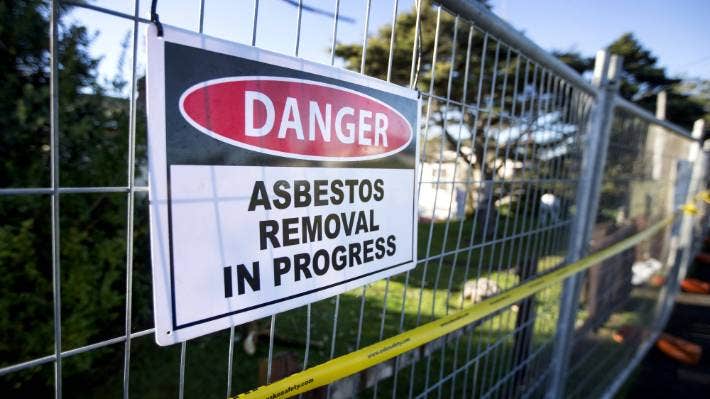Asbestos was used in thousands of products before it was recognized as a hazardous material. Although it is no longer used in new products, it can be found in insulation, flooring, shingles, siding, and many buildings built before the 1980s.
If you suspect your home or office contains asbestos, have it examined by a professional. Untrained individuals should never tackle the complex, potentially dangerous process of removing asbestos.
Those who must work with asbestos regularly must understand the risks – and how to minimize them. In this guide, we will provide five tips for safely handling and containing asbestos in buildings.
Tip 1. Turn Off HVAC Units and Seal the Vents
Our first safety tip for asbestos handling is to turn off all HVAC units in the building and seal off the vents. This will minimize the risk of creating airborne asbestos fibers, which can spread quickly.
This step is critical in the handling of asbestos: when inhaled, the fibers can lodge themselves in the lungs and cause serious health problems. Some of the common health effects of asbestos inhalation include:
- Asbestosis
Asbestosis is a chronic lung disease caused by excessive inhalation of asbestos fibers. These fibers can trigger inflammation and scarring in the lungs, resulting in shortness of breath, coughing, and other respiratory problems.
- Pleural Disease
This disease occurs when the fibers irritate the lining of the lungs and the chest cavity (pleura), causing inflammation. The pleural disease can lead to fluid buildup around the lungs (known as pleural effusion), shortness of breath, and chest pain.
- Mesothelioma
Mesothelioma is a rare but aggressive form of cancer that develops in the lining of the lungs, abdomen, or heart. This cancer is almost always caused by exposure to asbestos. Symptoms include chest pain, shortness of breath, and weight loss.
- Lung Cancer
Asbestos-related lung cancer generally develops after years of exposure and may not cause any symptoms until the disease is in its later stages.
Ultimately, turning off the HVAC units and sealing the vents help minimize the risk of these health effects for the workers and residents of the building.
Tip 2. Wear Proper Protective Gear
Technicians must wear proper personal protective equipment (PPE) during the handling of asbestos. This includes full-mask respirators, gloves, coveralls, boots, and other protective clothing.
Wearing adequate PPE is essential for two reasons:
- It will protect the workers from direct exposure during the containment of asbestos.
- Because the PPE is removable, it prevents the spread of asbestos fibers to other parts of the building.
To decontaminate from asbestos, workers should remove their PPE in a designated area and place it in a labeled, sealable bag. They should then shower, change into clean clothes, and launder the contaminated clothing separately from other items.
Failure to wear proper PPE or to decontaminate properly can result in serious health consequences for the workers and residents. Additionally, spreading asbestos fibers to other parts of the building can create liability issues for the property owner.
Tip 3. Seal Off the Area
The next safety tip for asbestos handling is to close off the affected area. We recommend hanging plastic sheeting over all doorways and windows leading into the work area.
You should also seal any cracks or holes in the walls, floors, or ceilings that could allow asbestos fibers to escape. Apply caulk or another type of sealant around the edges of these openings.
Once the work area is sealed off, put up warning signs and tape to let others know that asbestos is present. Only authorized personnel should be allowed in the work area while the asbestos containment and removal occur.
Failing to take these precautions could result in passersby being exposed to asbestos fibers. Again, this could create a liability issue for the property owner.
Tip 4. Use Wet Cleanup Tools to Treat the Site
Another critical safety tip for asbestos containment: use wet cleanup tools and methods when treating the site. This involves wetting the asbestos fibers before starting the removal process.
Moistening the fibers helps prevent them from becoming airborne and inhaled. It also makes cleaning the work site easier after the job is finished. Water will bind the fibers together, making them less likely to spread.
Workers should take avoid creating excessive dust when using wet cleanup tools. If the work area becomes too dusty, they should stop working and wet the area down again. This prevents the asbestos fibers from becoming airborne. Furthermore, an excessively dusty work area can be a health hazard in and of itself.
Tip 5. Place All Materials in Safe Storage
Finally, place all of the asbestos-contaminated materials in leak-tight containers before removal from the site. These containers should be labeled with the type of asbestos and the date of containment.
When it comes to storing and transporting contaminated items, select containers that are made of durable materials. Ensure that the containers are properly sealed with a specialized tarp before being transported off-site. If the seal is broken, the asbestos fibers could escape and contaminate other areas.
Transporting and disposing of asbestos-containing materials can be complicated. To ensure the job is done safely and correctly, work with a company that has relevant experience in your field and location.
Don't Risk Your Health - Talk to the Professionals
Asbestos is a hazardous material that causes serious health problems when mishandled. To minimize the risk of exposure, take the proper safety precautions. Following the tips above will help promote a safe, successful asbestos containment and removal process.
Are you looking to invest in airborne waste tarps to help your business handle asbestos?
PacTec is a leading manufacturer of high-quality bags and liners. We offer a variety of containment products. To learn more, get a free, no-obligation quote today!




